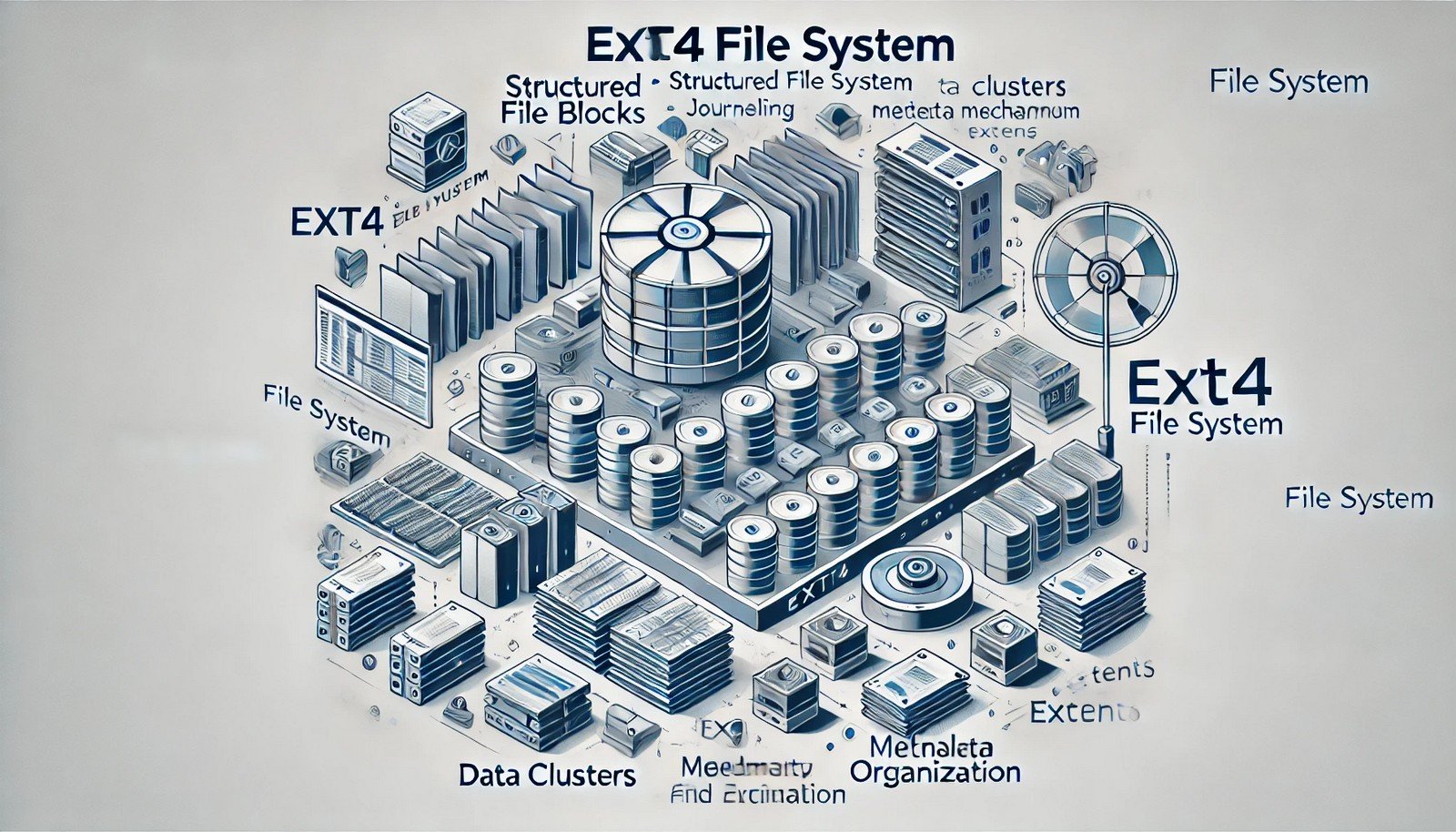EXT4 File System
 (Representational Image | Source: Dall-E)
(Representational Image | Source: Dall-E)
Quick Navigation:
- EXT4 File System Definition
- EXT4 File System Explained Easy
- EXT4 File System Origin
- EXT4 File System Etymology
- EXT4 File System Usage Trends
- EXT4 File System Usage
- EXT4 File System Examples in Context
- EXT4 File System FAQ
- EXT4 File System Related Words
EXT4 File System Definition
The EXT4 (Fourth Extended Filesystem) is a journaling file system used primarily in Linux operating systems. It is the successor to EXT3 and offers improved performance, reliability, and scalability. EXT4 introduces features such as extents, delayed allocation, journal checksumming, and multiblock allocation, making it more efficient in handling large files and reducing fragmentation. It is widely used in modern Linux distributions for its balance between speed and data integrity.
EXT4 File System Explained Easy
Imagine you have a big notebook where you write down your school notes. EXT3, the older system, writes each note separately and immediately, even if you change your mind and rewrite things later. EXT4, however, organizes your notes better by writing things in batches, keeping track of changes smarter, and making sure you don’t lose any important notes if you suddenly drop your notebook. That makes it faster and more reliable!
EXT4 File System Origin
The EXT4 file system was introduced in 2006 as an improvement to EXT3. It was initially developed by Theodore Ts’o and included in the Linux kernel version 2.6.28, released in 2008. The main goal was to overcome the limitations of EXT3, allowing larger file and volume sizes while improving efficiency.
EXT4 File System Etymology
The name “EXT4” comes from “Extended Filesystem,” following its predecessors: EXT, EXT2, and EXT3.
EXT4 File System Usage Trends
EXT4 has been the default file system for many Linux distributions, including Ubuntu, Debian, and Fedora. Although newer systems like Btrfs and XFS offer advanced features, EXT4 remains popular due to its reliability and backward compatibility. It is widely used in personal computers, servers, and embedded systems.
EXT4 File System Usage
- Formal/Technical Tagging:
- File System
- Linux Kernel
- Storage Management - Typical Collocations:
- "EXT4 file system performance"
- "format disk with EXT4"
- "convert EXT3 to EXT4"
- "mount EXT4 partition"
EXT4 File System Examples in Context
- A Linux user formatted their SSD with EXT4 for better performance and reliability.
- Many web servers use EXT4 due to its stable and efficient file-handling capabilities.
- Data recovery tools often support EXT4 because of its widespread use in Linux systems.
EXT4 File System FAQ
- What is EXT4 used for?
EXT4 is used as a file system in Linux to manage data storage efficiently on hard drives and SSDs. - How is EXT4 different from EXT3?
EXT4 supports larger files, extents, delayed allocation, and better journaling compared to EXT3, improving speed and reliability. - Can Windows read EXT4?
Windows does not natively support EXT4, but third-party tools like Ext2Fsd and Linux Reader can access EXT4 partitions. - Is EXT4 better than NTFS?
EXT4 is optimized for Linux and provides better performance on Linux systems, while NTFS is more suited for Windows. - Can I convert EXT3 to EXT4 without losing data?
Yes, you can upgrade from EXT3 to EXT4 without reformatting using the `tune2fs` command, but a full backup is recommended. - Does EXT4 have file size limitations?
EXT4 supports individual files up to 16 TiB and volumes up to 1 EiB, significantly larger than EXT3’s limits. - Is EXT4 a journaling file system?
Yes, EXT4 uses journaling to prevent data corruption and ensure stability in case of sudden crashes. - What Linux distributions use EXT4?
Ubuntu, Debian, Fedora, and many other distributions use EXT4 as their default file system. - Does EXT4 work well on SSDs?
Yes, EXT4 performs well on SSDs and supports features like TRIM to optimize performance. - Is EXT4 being replaced?
Newer file systems like Btrfs and XFS offer advanced features, but EXT4 is still widely used and actively maintained.
EXT4 File System Related Words
- Categories/Topics:
- Linux Storage
- File System Optimization
- Journaling File Systems
Did you know?
EXT4 supports a feature called "delayed allocation," which improves performance by deciding where to write data at the last moment. While this boosts efficiency, it also means that sudden power failures might result in partial file writes, leading to potential data loss.
PicDictionary.com is an online dictionary in pictures. If you have questions or suggestions, please reach out to us on WhatsApp or Twitter.Authors | Arjun Vishnu | @ArjunAndVishnu

I am Vishnu. I like AI, Linux, Single Board Computers, and Cloud Computing. I create the web & video content, and I also write for popular websites.
My younger brother, Arjun handles image & video editing. Together, we run a YouTube Channel that's focused on reviewing gadgets and explaining technology.



Comments powered by CComment